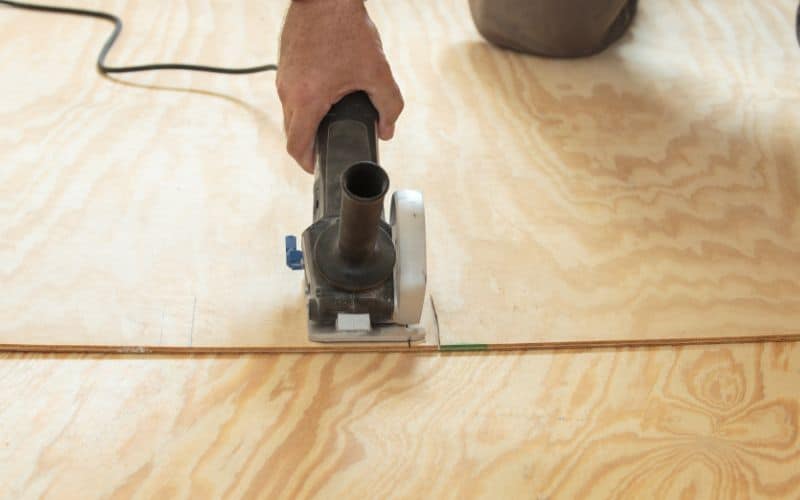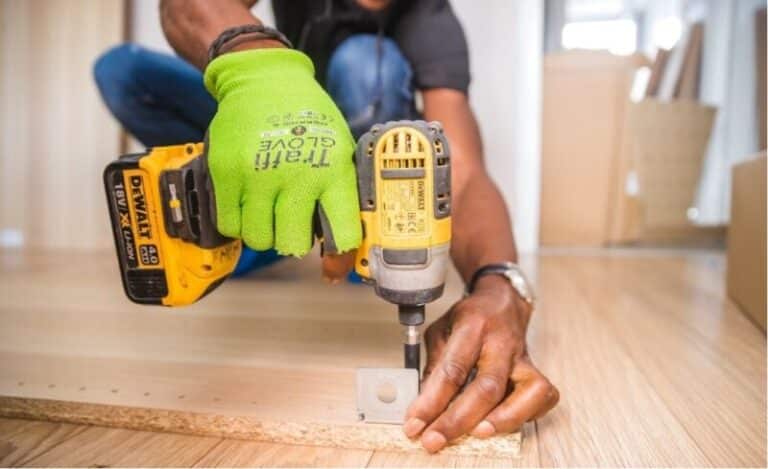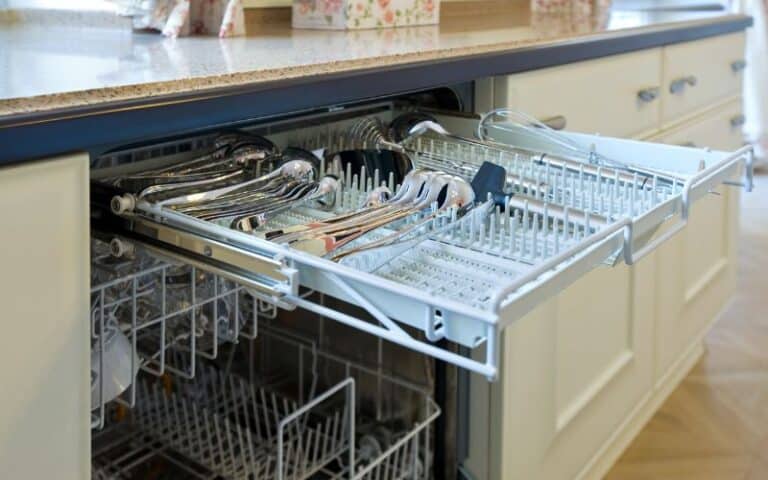Regarding subflooring, picking the best material is a must for the job.
There are several options available to choose from. One of the most popular choices is plywood, which can come in different thicknesses.
The two most commonly used subflooring types are 5/8 inch and 3/4 inch plywood; which is the best for your subfloor with better insulation?
Also, which plywood is more expensive, and why is it good? We’ll be comparing these two plywoods.
Depending on the subflooring you want, 5/8 and 3/4 plywood differ but have advantages and disadvantages. If you want a subfloor with more stability and won’t sag easily, although more expensive, use 3/4 plywood. However, for a subfloor that doesn’t require extra thickness or wants to install a carpet, 5/8 plywood will be great and cost-effective.
This article will compare the 5/8 and 3/4 plywood for subflooring and provide tips on the type best suited for certain applications.
By the end, you’ll know which plywood best suits you based on your budget and subflooring needs.
Ready for a Flooring Quiz?
5/8 Vs. 3/4 Plywood; Which Is Better for Subflooring?

Choosing the right subfloor plywood is important when constructing a new home or renovating an existing one.
To choose between a 5/8 and 3/4 plywood, you must understand its pros and cons before deciding the best to use for your subfloor.
5/8 plywood is thinner and lighter than 3/4, making it easier to handle and install. It is also cheaper, making it a more affordable option for those on a tight budget.
However, 5/8 plywood is not as durable as 3/4 plywood and may not be suitable for high-traffic areas or areas with heavy furniture.
On the other hand, 3/4 plywood is thicker and heavier than 5/8 plywood, making it more durable and sturdy. It is better for areas with much foot traffic, such as hallways and living rooms.
However, it is also more expensive than 5/8 plywood, which may make it a less attractive option for those on a budget.
The choice between 5/8 and 3/4 plywood for subflooring will depend on several factors.
For instance, the amount of foot traffic the area will receive, the weight of furniture placed on the subfloor, and the overall budget for the project.
Also, if your local building codes require you to use a larger joist spacing based on the subfloor spacing, then a 3/4 plywood it is.
The plywood thickness will provide the support needed.
Sometimes, the flooring you want to install will affect the thickness of the plywood you want to use for your subfloor.
For instance, if you want to install tile flooring, you need a solid subfloor like the 3/4 plywood. However, for lighter flooring like a carpet, then a 5/8 plywood will work.
Considering all these factors carefully before making a final decision is important.
The table below will highlight the key features of the 5/8 and 3/4 plywood when used in subflooring.
| 5/8-inch Plywood | 3/4-inch Plywood |
|---|---|
| It is lighter and easier to install. | It is thicker and more difficult to install. |
| It is more likely to sag over time and is less stable than 3/4 plywood. | It is more stable and durable. |
| Cheaper than the 3/4 plywood. | It is more expensive. |
| Suitable for standard joist spacing (16 inches) | Great for wider joist spacing (24 inches.) |
In essence, 5/8 and 3/4 plywood can be effective choices for subflooring if installed properly and used in the appropriate areas.
With proper installation and maintenance, either option can provide a strong, stable foundation for your flooring.
Generally, there is no clear winner if it boils down to choosing between 5/8 and 3/4 plywood for subflooring.
It now depends on your project’s specific needs and a professional contractor’s advice.
However, considering factors like weight-bearing capacity and plywood quality, you can create a durable and long-lasting subfloor for your home.
Does 5/8 Plywood Insulate Better than 3/4 Plywood in Subfloor?
No, 5/8 plywood does not provide better insulation than 3/4 plywood used for subflooring.
However, plywood doesn’t have much insulation compared to other materials designed for insulation. They have minimal R-value, and so provide a little insulation.
The R-value refers to the material’s thermal resistance, indicating its ability to resist heat flow. The 5/8 plywood has a R-value of 0.77, while the 3/4 plywood R-value is 0.94.
While there isn’t a significant difference in R-values between the two thicknesses, other factors impact the insulation value of your subfloor.
There are a few things to remember when it comes to insulation. First, having a well-insulated subfloor is important to keep the house comfortable and reduce energy costs.
Second, the type of insulation used is more important than the thickness of the subfloor.
Thicker plywood can offer other benefits to your subfloor. It is generally more stable and durable than thinner plywood, making it less likely to sag or buckle over time.
Thicker plywood may also be more resistant to moisture damage, which can be important in areas with high humidity levels or prone to water leaks.
Another important consideration is the type and quality of insulation between the joists.
Fiberglass batts, rigid foam, and spray foam insulation can contribute to better home insulation.
Proper air sealing and weather stripping are crucial in maintaining an energy-efficient home.
In summary, both 5/8 and 3/4 plywood have similar insulation properties.
Regarding subflooring, insulation value can be increased by choosing high-quality insulation materials and ensuring proper air sealing.
Using 5/8 or 3/4 Plywood for Subflooring; Which Is More Expensive?
The cost of subfloor plywood can vary depending on several factors, including the thickness of the plywood and the quality of the wood used to make it.
Generally, 3/4 plywood is more expensive than 5/8 plywood due to its higher thickness and sturdier construction.
However, the price difference may not be significant enough to make a big impact on your budget.
If you’re on a tight budget, using 5/8 plywood for subflooring may be a more affordable option.
However, remember that 5/8 plywood is not as sturdy as 3/4 plywood, which could impact the longevity and durability of your subfloor over time.
Ultimately, deciding to use 5/8 or 3/4 plywood for subflooring will depend on your specific needs and budget.
If you’re building a high-traffic area or planning to install heavy furniture or appliances, investing in 3/4 plywood may be worthwhile.
On the other hand, if you’re renovating a low-traffic area or looking for a more affordable option, 5/8 plywood may be a better choice.
How Many Layers of 3/4 Plywood Is Good for Subflooring?
One layer should do when it comes to using 3/4 plywood for subflooring; however, for more support, you can add another layer to it.
It is important to note that the quality of the plywood is also a factor to consider. A higher-quality plywood may allow for fewer layers than a lower-quality one.
It is also important to consider the intended use of the subfloor when deciding how many layers of 3/4 plywood to use.
For example, if the subfloor is for heavy loads or constant foot traffic, it’s best to use additional layers of plywood for added strength and stability.
If you have an uneven subfloor, add another layer of 3/4 plywood to create a level surface. That will even help the floor squeaking reduce.
An extra layer of this plywood will help reduce sound transmission. Additionally, it is best to use adhesive between each layer of plywood for added strength and durability.
Most Durable Subfloor Plywood: 5/8 or 3/4?
When it comes to subflooring, durability is a top priority. You want to ensure that your subfloor will be strong enough to withstand the weight and pressure of everything placed on it.
Both 5/8 and 3/4 plywood are strong and durable options for subflooring. The thickness of 3/4 plywood is thicker and therefore has a higher weight-bearing capacity.
Use 3/4 plywood for subflooring in areas with high traffic or heavy loads, such as kitchens. The 5/8 plywood is also a viable option for subflooring.
It is slightly less expensive than 3/4 plywood, and you use them in areas with moderate traffic, such as bedrooms or hallways.
Additionally, if you design your home’s framing and joists to support 5/8 plywood, you may not need to invest in the thicker option.
Ultimately, the decision between 5/8 and 3/4 plywood for subflooring depends on the specific needs of your project.
It’s important to consult with a professional contractor or engineer to determine the best plywood thickness for your subflooring.
With the right choice, you can have a strong and durable foundation for your flooring and all the activity that comes with it.






